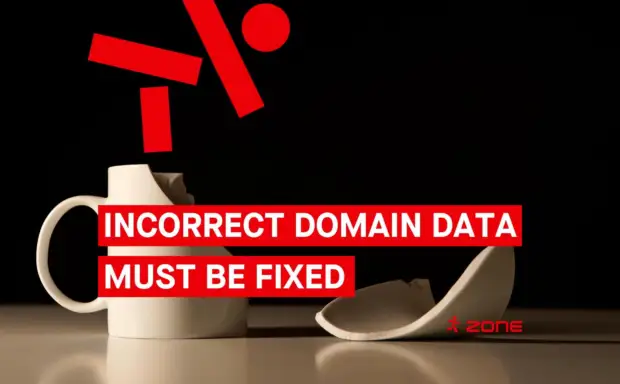This may sound unbelievable, but we have to explain to potential customers and other people interested in our services time and again what a domain is all about. The point of today’s post is to lay down the most basic truths and wisdoms to explain this seemingly complex concept as clearly and understandably as possible.
In essence, a domain is two things at once: it is both your address and your identity on the Internet. It is a word that brings your existing and potential customers or just people interested in you to the website talking about your activities. This word is also included in your e-mail address when you want to send an e-mail to one of these guests or reply to their e-mails. A domain is like your phone number – it is unique and makes you accessible to the world.

You must rack your brains to choose a domain name, just like you did when trying to find a name for your business. If you have already found a great name for your company, you are halfway there. However, it’s always worth looking a few steps further and experimenting with different word combinations when looking for the right domain name, to find the most resonant and understandable phrase or abbreviation, describing your company or activity and also sounding clear and good even over the phone.
For example, the domain name innovative-and-revolutionary-marketing-solutions.com could accurately describe your business, but try to say it over the phone to a customer: “Innovative, hyphen, revolutionary, hyphen… No-no, let’s start again.” And when you put an e-mail address with such a domain on your business card, you will wait forever to get some e-mails from your clients… It is therefore worth finding a combination or description that is as short and to the point as possible, without creating ambiguity or confusion. When choosing this name, make sure it is meaningful, credible, logical, relevant to your core business and as short and clear as possible so that it is easy to find on Google.
Should you choose .COM or .EU?
Once you have found a suitable name or description, it is worth thinking about which top-level domain you should associate it with. A top-level domain (TLD) is the extension located to the right from the dot in a domain name.
For example: if your business name is in Estonian and you plan to focus your business activities on the Estonian market, choose the Estonian top-level domain, which of course ends in .EE. If you are looking to make your business more visible internationally, you can do so in EU countries by using the .EU top-level domain. Reaching your neighbours goes more smoothly when using the .FI (Finland), .LV (Latvia), .LT (Lithuania) or .SE (Sweden) top-level domains. However, it is worth taking into account the linguistic peculiarities of each country, and find a description in the native language of that country instead of using the Estonian word.
In addition to top-level domains including the country code and having local significance, you can also choose from generic top-level domains with global scope: these are the well-known .COM, .NET, .ORG, etc. domains. The Internet as we know it today started from these, and while the long history of these top-level domains means that many well-known English words and phrases have already been registered, there is no need to despair – you can be sure there is gold yet left to be mined.
In recent years, the choice has become even more varied, with hundreds, if not thousands of newly-generated top-level domains being thrown onto the market, the most colourful being e.g. .BEER, .NINJA, .FISH or .DOG, etc. For example, Zone offers almost 400 different top-level domains to its customers today.
While there is no point in associating your unique business name or business description to all of these top-level domains, you should still consider protecting it at least in the more popular and common top-level domains. For example, if your website and e-mail addresses are located at yourname.ee, it makes sense to register the domains yourname.com, yourname.net, yourname.eu, yourname.fi, yourname.lv, etc. and redirect them to your main domain, i.e. your website at yourname.ee.
Registering multiple domains may also be necessary for those who offer their services through a web application. This allows you to keep your company’s public website and the application processing personal data separate for security reasons, and manage the information security risks associated with them differently.
By registering your own business identity under alternative top-level domains, you can prevent someone else from taking them and redirecting your customers to their own site. You can also prevent attempts to sell these domains back to you at a higher price later. For example, the apple.co.uk domain did not belong to Apple for as long as 16 years.
It is often a good idea to register several “similar sounding” domains to your company’s name, so that competitors cannot come and harm you on your own turf. For example, when registering yourfurniturestore.ee, you should also register the domains yourfurnitureshop.ee and yourfurniturestore24.ee, if possible.
Be aware of potential risks
However, there is also the opposite risk involved, because you could unknowingly and in good faith register a free name that could cause you trouble with some trademark owner in the future. To avoid this, be sure to check before registering whether the intended name could conceal a potential risk of infringing someone else’s commercial or trademark interests. This aspect needs to be taken into account with particular care when registering, e.g. a Finnish (.FI) domain, as all it takes is for the trademark holder to file a complaint with the Finnish domain registry, which will then revoke the rights of the original registrant and transfer the domain to the complaining trademark holder without further ado. You can check it on the EUIPO website.
When registering a domain name, it is very likely that the domain you wish to register has already been taken. Do not be discouraged, though, because in that case it’s worth checking whether the desired name is free in another top-level domain. This often resolves the problem. But if you still desire to get your hands on precisely that domain name, you have no choice but to contact the domain owner and conclude a deal with them. Note, however, that the price tag of the exchange of ownership transaction could have at least four digits on it, if not five. To get an idea of the scale, the colourful history of the Internet includes a transaction where a domain name passed from one owner to another for the astronomical sum of 345 million dollars.
Domain from an auction. What to consider?
Having bought a domain from an auction or directly from its previous owner, you should take into account that the domain will bring its whole history along. This can be both good and bad news. The good news is that the domain is already known to Google and therefore easier to find and positioned at the top of search queries. The bad news is that it could also bring along some objectionable and unpleasant baggage, such as associations with gambling, spam and other dubious content. Considering this, it is also worth exploring the history of the domain before making any bids at the auction or going through with the transaction. There are various websites available on the Internet you can use both for checking the background of the domain’s old owner and for viewing the former content of the webpage. This way, you can avoid registering a domain name with a dubious reputation, which could lead to potential problems.
Don’t forget to renew your domain registration!
Continuation or renewal of domain registration is probably one of the most important aspects of your domain’s lifecycle. A lot of people tend to forget it, or sometimes the head of the company has asked an employee to register the domain initially but this employee has left the company, taking the knowledge of domain validity with them. That’s why you should always register and set up your domain yourself, as then you can be sure that you own all rights and no one can walk away with your assets. You will also experience performing simpler operations with your domain: for example, switching domain name servers or modifying DNS records to redirect the domain to the desired addresses, etc.
You can also choose a longer registration period than one year for the most common extensions when registering your domain. Choose as long a period as possible, as then there is no risk of it expiring after a year. If you have registered your domains at Zone, we will send you the first expiry notice 2 months before the expiry date. Depending on the top-level domain, you can register or renew a domain for up to ten years at a time.
Post navigation
Popular posts

.NO domain now at Zone – is your business ready for the Norwegian market?

Zone Webmail 3.0: New features that make email management easier than ever

Still the rightful owner of your domain? ICANN’s new rule means it’s time to double-check
